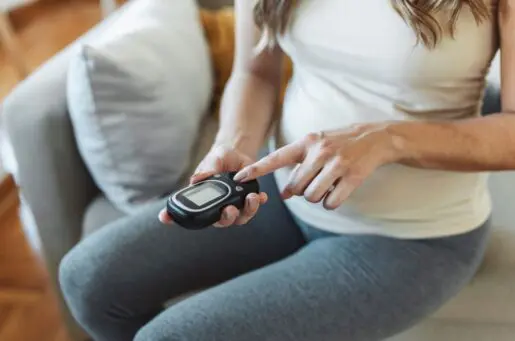Bioethics Forum Essay
Access to Pediatric Assistive Technology: A Moral Test
Most of us have a weakness for a donut and coffee in the morning. But not everyone places their order in the same way. One young man we know uses an application on his iPad to communicate his preferences, including his predilection for a chocolate-frosted donut and an iced coffee with almond milk. This device allows him to express himself independently just like everyone else.
For this individual and other people with disabilities, augmentative and alternative communication (AAC) devices facilitate communication, which, as we have argued, helps constitute community and societal integration. AACs encompass a range of technologies, such as tablet applications and eye-gaze devices. For some individuals, these devices supplement another form of communication, such as speech or sign language; for others, AACs are their singular means of connecting with the world beyond them.
Over the past several years, the Division of Medical Ethics at Weill Cornell Medical College and Blythedale Children’s Hospital (BCH) have collaborated to track the process by which children with brain injury and their families acquire access to assistive technology. Our goal was to map the byzantine process that heretofore had never been charted. We hoped to identify bottlenecks and lead to quality improvement for children with disabilities.
Our previous analysis drew from BCH medical records over a two-year period and included 72 children with brain injury who received a prescription for at least one assistive device. Despite the multitude of resources and remarkable clinical expertise available at BCH, we found that only 55% of devices were delivered. Furthermore, the average time to delivery was 69.4 days, with a range of 12 to 250 days. The device with the longest time to delivery was a special needs car seat, a technology that quite literally provides a child with access to the surrounding community.
We recently met to continue our research. At a multidisciplinary team meeting, we learned of the process by which a child acquires an AAC device. It’s a maddening process. First, the clinician, often a speech-language pathologist, identifies a need and determines what sort of device would be best suited to assist with communication. Then they prescribe an appropriate device. To ensure that this is money well spent, the insurance company requires a one-month trial of the device before it is approved. And then the vendor supplies the device, as required by the insurance company.
Makes sense, right? But now illogic and, we would say, cruelty creeps in. After a successful trial of the device–an intervention that will help a child communicate with their family or go to school–the device is taken away by the insurance company for the duration of the approval process.
Let us reiterate what happens. For one month, the child is given access to the AAC device that provides them with a previously unavailable mode of communication. For one month, they can communicate their wishes to their parents and siblings, respond to their teacher’s question in the classroom, or make new friends at the playground. And during that one month, they grow and develop, as children are prone and ought to do. Maybe they learn to tell jokes, read aloud, or order their favorite breakfast beverage independently.
In 2023, clinicians at BCH prescribed 18 AAC devices. Each of the devices was deemed eligible for a particular child and approved by an insurance company for coverage. However, despite the success of the one-month trial period and subsequent insurance approval, the children had to wait to get their devices. The average time to delivery was nine weeks, with a range of one week to five months. The device with the longest time to delivery was an eye-gaze device. This AAC helps individuals with motoric disabilities communicate.
These delays to delivery are significant. Education literature suggests that first through eighth grade students lose between 17% and 28% of their English language arts skills and 25% to 34% of their math skills during the three-month summer vacation. While the “summer slide” experienced by typically developing children is concerning, one can only imagine the devastating impact of delays for children who rely on access to assistive technology. For a child who waits nine weeks, it’s the loss of nearly a whole summer. When the delay is five months, that’s a couple of summers. Furthermore, children with cognitive or speech disabilities can miss critical neurological milestones when they are unassisted. This compounds the effect of a delay and may lead to repercussions with enduring ill-effects.
The illogic of this delay leaves us speechless. All the more so because the data from BCH reveals that all the patients who demonstrated improvement during the one-month trial ultimately received their devices. So why the wait? Why impede their development? And why the cruelty? After these children are given the keys to communication, these keys are taken away. The door is locked, and their world goes dark. What had been an opportunity for community and reciprocity is now one for segregation and isolation. How can this be right?
To delay these benefits is especially paradoxical because there is a small but growing neuroethics literature arguing in favor of post-trial obligations following device trials that have benefitted study participants, whom Goering et al. characterize as “pioneers.” The question of post-trial obligations for as yet unproven devices is now the focus of grants funded by the BRAIN Initiative. This funding priority represents a normative argument for investigational devices. In the context of AAC, we are delaying access to devices that have already been proved therapeutically effective.
Beyond the ethics, we contend that these delays are also a matter of law. As we have written, the Americans with Disabilities Act (ADA) mandates maximal societal integration for individuals with disabilities. Title IV of the ADA outlines access to assistive technology, naming telecommunications devices for the deaf, also known as teletypewriters (TTY). In 1990, when the ADA became law, TTY was the primary assistive device for communication. With progress in electronics and neuroscience, communication devices have advanced way beyond TTYs. Because of this progress we must not be stuck in a purely textual reading of the ADA that limits access to more modern technologies.
These advances remind us of the Deweyan aphorism that speaks to how technological progress can expand our moral horizons. In Common Sense and Scientific Inquiry, Dewey wrote, “Inventions of new agencies and instruments create new ends; they create new consequences which stir men [all people] to form new purposes.” So, it is here. We are compelled to use the marvels of modern AT to serve some of the most vulnerable among us. It would violate the spirit of the law, and its normative implications, to eschew novel technologies that could further remediate the segregation of people with disabilities.
Through our collaboration with BCH, we have seen the dedication of hospital administrators, clinicians, and therapists providing excellent care to children and their families. Among their robust services–inpatient and outpatient care and a state-accredited public school –is the specialty AT clinic, which provides loaner devices to help bridge the gap between the trial period and the arrival of the device. However, even Blythedale does not have the resources to make eye-gaze devices (which can cost $15,000 or more) available during the waiting period, especially if it lasts five months.
And what of the children and families who never have access to the specialty care and advocacy that BCH offers? This is a deeper level of inequity that transcends the technology and speaks to broader systems of care. For these children, delays risk becoming denials. This is something society should neither allow nor accept.
Former Vice President Hubert H. Humphrey reminds us, “It was once said that the moral test of government is how that government treats those who are in the dawn of life, the children; those who are in the twilight of life, the elderly; and those who are in the shadows of life, the sick, the needy and the handicapped.”These words, now enshrined in marble in the Department of Health and Human Services building that bears Humphrey’s name, should be ensconced in policy to give voice to the voiceless.
Anything less is not worthy of us and is a violation of civil rights.
Kaiulani S. Shulman, B.A., graduated from Yale College with distinction in religious studies. She is a research assistant in the Division of Medical Ethics at Weill Cornell Medical College and will start medical school in the fall.
Joseph J. Fins, M.D., D. Hum. Litt. (hc), M.A.C.P., F.R.C.P., is the E. William Davis Jr. M.D. Professor of Medical Ethics, a professor of medicine and chief of the division of medical ethics at Weill Cornell Medical College; Solomon Center Distinguished Scholar in Medicine, Bioethics and the Law and a Visiting Professor of Law at Yale Law School; and a member of the adjunct faculty at the Rockefeller University. He is a Hastings Center fellow and chair of the Center’s board of trustees.
Acknowledgements:
The authors acknowledge the support of a pilot award from the Weill Cornell Medical College Clinical & Translational Science Center, “Assistive Technology in Pediatric Brain Injury Following In-patient Rehabilitation: Access, Barriers and Burdens on Patients and Families” [UL1TR002384] and the Blythedale Children’s Hospital, and the Monique Weill-Caulier Charitable Trust. We would like to acknowledge the collegiality and insights of the Assistive Technology in Brain Injury research team, including colleagues Debjani Mukherjee, Linda Gerber, and Jennifer Hersh from Weill Cornell Medical College and Barbara Donleavy-Hiller, Karen Conti, Julie Knitter, Rita Erlbaum, Marnina Allis, Linda Fieback, William Watson, as well as the late Barbara Milch from Blythedale Children’s Hospital. We are especially grateful for the visionary leadership of Larry Levine, President and CEO of Blythedale Children’s Hospital.














Thank you. This is hope-bearing, life-affirming technology. Your ethical and moral concern is clear and that we should be concerned is obvious.
But readers are call to care without description of a plan to remedy the problem. This is what our moral, ethical, and as you say, legal, concern calls for.
Are you asking readers to remonstrate with your state insurance regulators? (provide the address and draft letter) federal insurance regulators? (provide a link to request regulatory review) specific insurance companies (that you never name; who are they)? our representatives in Congress regarding amending the Americans with Disabilities Act? (cite the portion of ADA we need for reference, and draft specific language). Should we asking foundations and corporations to make this a priority for awards? in your state? nationally? Are you seeking a law firm to represent these young people?
Please describe several practical steps forward that you advise from your years’ long research and experience. Thank you.
Very much appreciate this perspective on a subject about which I knew almost nothing. How might our community of ethicists and other professionals help with changing this?
I really enjoyed reading this paper. I look forward to the second part: What happens to those children who do not have insurance, to homeless children, or to the children of illegal immigrants, who do not stop being children in need. In my country we are barely providing cochlear implants and it is still an “adventure” because those who handle the money (administrators and accountants of the institutions) do not believe in the benefits of these AACs. There is still a lot to do and reporting (like this one) is a good start.
Your focus on pediatrics is natural (and the urgency is clear), but it’s possible the same problems occur with adult and elderly patients with stroke, Parkinson’s and other conditions.